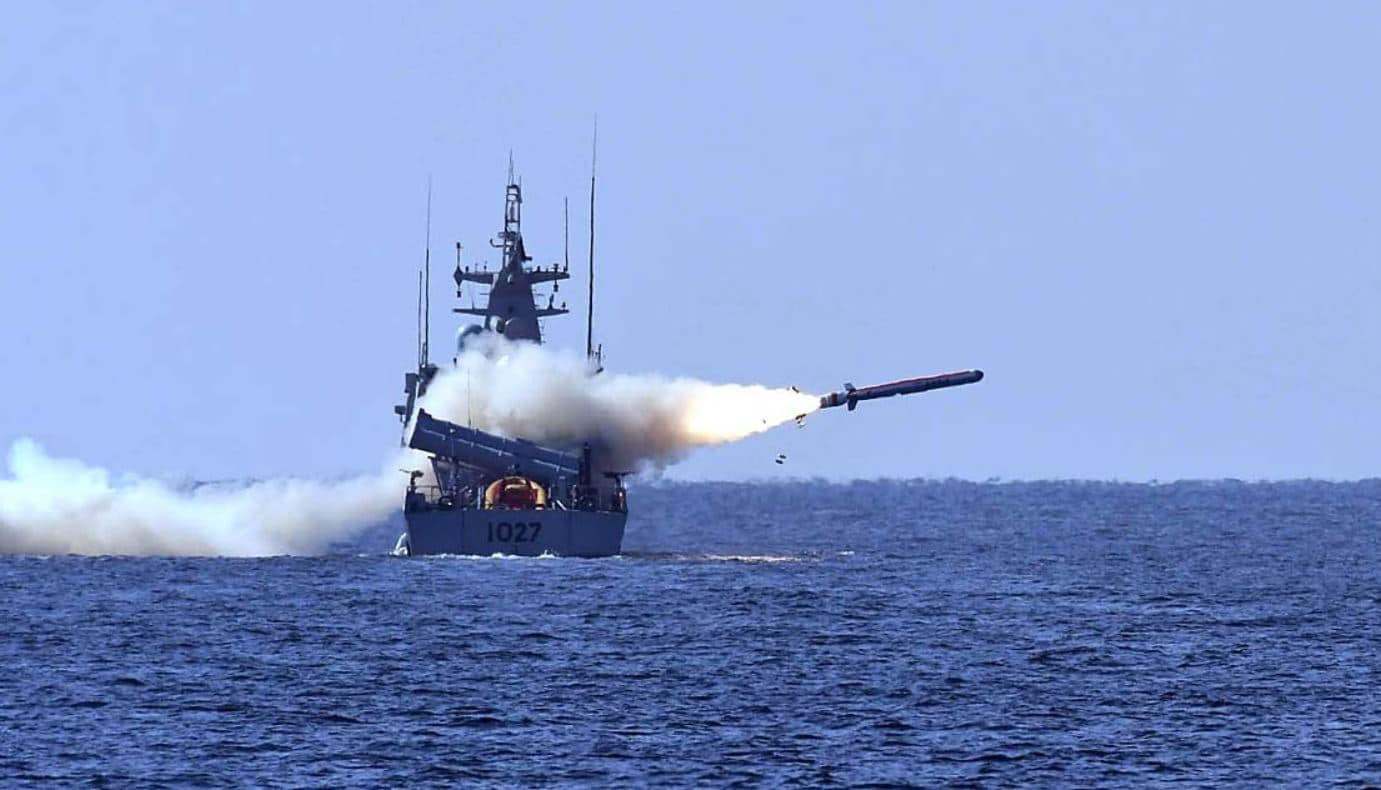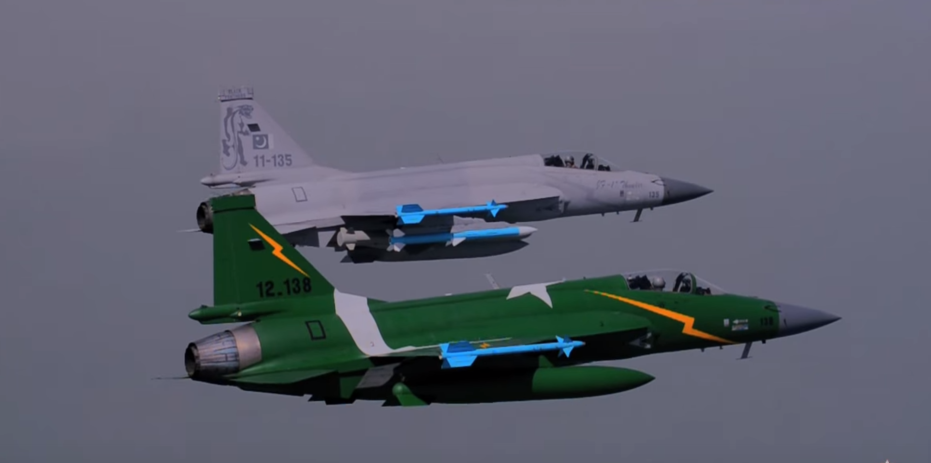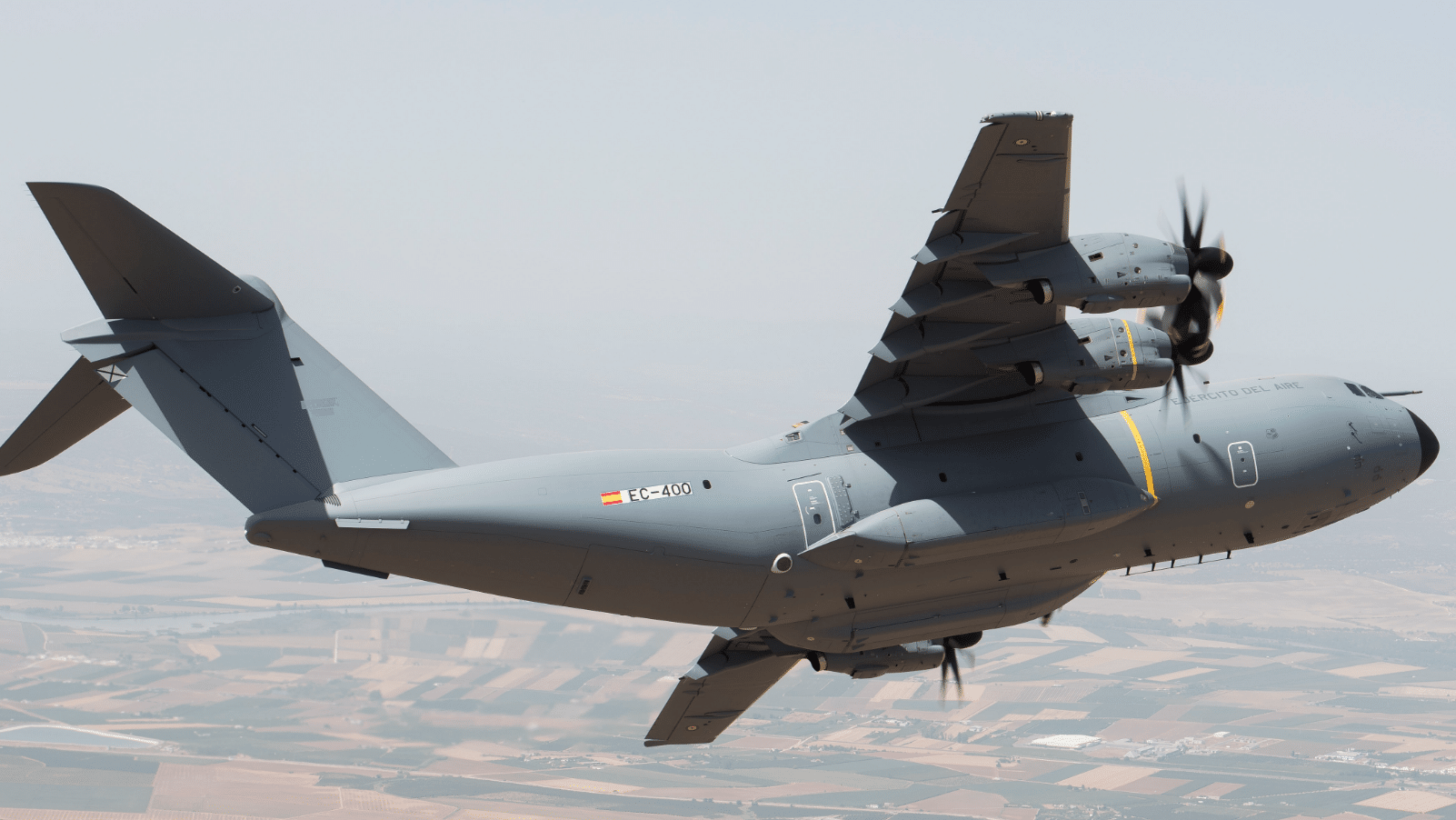2928Views 19Comments

Pakistan test-fires Harba anti-ship cruise missile
On January 03, the Pakistan Navy announced that it test-fired the ‘Harba’ anti-ship cruise missile (ASCM) from the Azmat-class fast attack craft (FAC) PNS Himmat.
“[PNS Himmat] fired indigenously developed Harba Naval Cruise Missile, which is a surface-to-surface anti-ship missile with Land Attack capability,” said the Pakistan Navy through the state-owned Associated Press of Pakistan (APP).
The existence of the Harba ASCM was revealed by the previous Chief of Naval Staff (CNS), Admiral (retired) Muhammad Zakaullah in his farewell speech in October 2017, who had also mentioned the Zarb coastal ASCM and Babur 3 submarine-launched cruise missile (SLCM).
Launched for sea trials in September 2016 and commissioned in July 2017, the PNS Himmat is the first of two Azmat-class FACs modified to deploy the Harba ASCM (the second is under construction).
During its commissioning ceremony, Karachi Shipyard & Engineering Works (KSEW) stated that the PNS Himmat was equipped with an “indigenously built (sic) Missiles System.” Unlike the preceding two Azmat-class FACs – i.e. PNS Azmat and PNS Dehshat – the PNS Himmat is equipped with dual-triple (2×3)-cell missile launchers instead of the dual-quad (2×4) launchers enclosing the C-802 ASCM.
It was apparent that the use of 2×3 launchers indicated the deployment of a – then unspecified – heavier and/or longer-range missile. It also appears that the Harba is connected to the missile launcher program assigned to Pakistan’s Directorate General of Munitions Production (DGMP) in 2014-2015.
As per Pakistan’s Ministry of Defence Production (MoDP) yearbook for 2014-2015, the DGMP was tasked with “the indigenous (sic) developing of ship-borne system with Land Attack Missile [LACM] and Anti ship Missile.” This launch system was due for completion by October 2018, but it aligns with the stated feature-set of the Harba, which is “a surface-to-surface anti-ship missile with Land Attack capability.”
A photograph and video footage of the Harba ASCM’s launch appear to show a variant of the Babur-series LACM, which is deployable from land and has a stated range of 700 km. The Babur is a sub-sonic cruising design capable of low-altitude flight and terrain-hugging. In December 2016, Pakistan announced that it tested Babur Version 2, which Inter Services Public Relations said was capable of engaging “targets … at sea.” In January 2017, Pakistan also tested the 450-km range Babur 3 SLCM.
Notes & Comments:
If the Harba ASCM is a variant of the Babur, then it would essentially be a long-range sea-skimming ASCM. Like the C-802 ASCM, the Harba ASCM would likely rely on an inertial navigation system (INS)-based mid-course guidance system coupled with a terminal-stage active-homing seeker. It is not known what kind of active seeker the Harba ASCM is using, though for anti-ship warfare (AShW) active radar-homing (ARH) is a widespread solution. However, imaging infrared (IIR) could be an alternative, especially involving cases where strong electronic warfare (EW) and electronic countermeasures (ECM) jamming is expected (which can interfere or scuttle an ARH seeker). The key aspect of the Harba is its potential range – 450 km or 700 km (depending on whether it is derived from the Babur 3 or Babur Version 2, respectively).
The Azmat-class FAC is not equipped with a long-range radar for surface target detection, tracking and mid-course guidance. To fully utilize the Harba’s range as an AShW solution, the PNS Himmat will require an off-board sensor, which could be another ship, an aircraft – such as the ZDK03/Karakoram Eagle airborne early warning and control platform – or land/shore-based radar to provide mid-course guidance. However, this would not be necessary if the Harba is used as a LACM against a fixed target, the PNS Himmat crew can simply input target information to the Harba’s INS guidance suite.
It would make sense for the Harba to be a standard ASCM of the forthcoming frigates being bought from China. Defense News reported that Pakistan inked a contract in June 2017 for a Type 054A frigate in the same sensor and weapons configuration as the People’s Liberation Army Navy’s ships. As per the Defense News report, Pakistan plans to procure a total of up to three of these frigates.
If correct, this configuration should include the Type 366 OTH radar, which is said to be a Chinese variant of the Russian Mineral ME. In fact, in 2014 China had agreed to sell an OTH radar suite to Indonesia under the designation of SLR-66. The SLR-66 could be the export variant of the Type 366. The SLR-66’s passive and active modes have ranges of 500 km and 280 km, respectively. This is close to the stated passive and active mode ranges of the Mineral ME (i.e. 450 km and 250 km, respectively).
The Type 054A can utilize the Type 366/SLR-66 OTH radar to provide mid-course guidance to targets for the Harba ASCM. In the capacity of a command ship, the frigate could also provide mid-course guidance support to other Harba-equipped ships, such as the Azmat-class FAC. Granted, the SLR-66’s active mode (280 km) would not be able to guide the Harba’s full range in AShW (assuming it is identical to the Babur), while the passive sensor is primarily meant for building OTH situational awareness. However, this might not be a concern for the Pakistan Navy as the Harba’s intended role is to be a dual-ASCM/LACM, the higher range envelope was likely intended for its deployment as a LACM.
Footage of the Harba’s test-firing:
https://www.youtube.com/watch?v=cTl8LQKBjzw




19 Comments
by Joseph
From the video footage it does look like a subsonic sea skimmer, but other than that apparently almost nothing is known, not even a clear photo. Pakistan is also being very secretive.
by Ale
It seems to have a recessed intake similar to TLAM Block IV, unlike the earlier Babur versions.
by Tondapu Abhirama
https://uploads.disquscdn.com/images/41b57d43ab5785c4dc675171b16066926d53de62e05545a80f74ae8f24a984b5.png WTF is this man is the video edited there are 2 missiles if you pause the video exactly at 25sec as i uploaded the screenshot.
by Bilal Khan
It was recorded in HD and then (as with all of ISPR’s videos including meetings and luncheons) downgraded to 360p, could be a by-product of that. Heck, bad editing of otherwise good root footage is also a possibility.
by Joseph
It could also be the result of shaky camera, but I am not a video expert so can’t sure that is the reason.
by SACHOKAT
it’s C-602 chines missile ship launch version….so thats why its so secretive.
by Lasit
good test .. but just wondering whether the range of the missile and seeker suit is such a big state secret that PN can’t disclose it
by Shariq Shakil
What is the difference in scope of Zarb, Babur & Harba missiles except range?? Can any one explain??
by U
From the article it seems the Missile simply can not be utilized for AShW at its maximum range (due to lack of equipment or by choice). Which is puzzling for me, why wouldn’t the Navy utilize its complete potential??
by sami shahid
Haha awesome…. now Pakistan should develop or buy anti Ballistic missile system.
by Waqas
Nice job done by Pakistan!
by Steve
Wonder if fits and can be launched from the 054A VLS system. Dimensions seem to bigger than C802.
by MT
There are so many problems with anti ship missile.
1. No long range radar can detect an object floating in sea
OTH radar are ground/sea blind beyond 30-50km until you have a mean to install them on an aircraft.
Passive guidance for lacm mode is nt needed in presence of effective INS and tercom (doesn’t work over sea)
2. Matured anti ship brahmos missiles also face similar problem. They need support of real time satellite to home in to running target.
3. AWACS have poor air to sea surveillance mode. They aren’t sharp to handle noisy sea clutter.
Only series of SAR radar with good resolution can detect moving ships
by Joseph
Babur is a land attack missile, which is for non moving targets. Zarb & Harba are anti-ship missiles of different ranges, which attack moving targets such as ships.
The main difference would be guiding systems. Babur most likely uses satellite navigation combined with inertial navigation and terrain matching.
Zarb & Harba most likely have a terminal stage active radar seeker and maybe infrared seeker as well to locate moving targets.
by Steve
Hypersonic applies mostly to ICBM so argument moot. Also India selling NUKES to Vietnam, Indonesia and Philippines?? I mean REALLY??
by Faisal
Its not a matter of if ‘China proliferate hypersonic technology in India’s neighbourhood’. India has already been in talks to sell its missiles to China’s neighbours and will seal the deal as soon as they are ready to buy it. Those Chinese neighbours will also need to understand reaction they will get from Chinese. Hypersonic missiles is not the only parameter in the equation when it comes to rivalry.
by MT
Air breathing scramjet missiles dependent on small but high IsP rated solid rocket booster to achieve early hypersonic speed in the earth atmosphere.
A minute of scramjet ride is approximately 300+km nd they don’t hv terminal phase so difficult to intercept if they can navigate waypoints across different hyperplane
by Crusher
Indians can’t accepted that they have been stalemated by a country much smaller in size and has excelled them in missile technology. They should try to find the problem within as to why they have repeated failed tests. This attitude of taking consolation and taking jabs at pakistan’s capabilities won’t help them in times of war.
Also MT you should know that india’s only operational cruise missile is assembled from Russian technology. Before you feel the urge to criticize pakistan’s capabilities it would be helpful to grill your research organization.
by MT
Hard facts are bitter to swallow but there is no evidence to suggest pak missile capabilities have come out of 1980 era technology.
Just look into components/subsystem of your Shaheen missiles families. Every one of them use jet vanes(Scud era primitive tech). India hv been using TVC since 90s.
Isp of engine at par with long march1 hence miserably poor compared to India’s agni solid engine based on Powerful GSLV strap on boosters (3rd highest isp among solid rocket family in world)Just compare their fire exhaust of shaheen with indian missiles. No composite casing, no MARV, no Gps connectivity.
Cruise missiles wre procured in exchange for crashed tomahawks given to china for rev engg
If you believed that these CM are indigenously produced then you would hv presented more facts on those subsystem produced inHouse